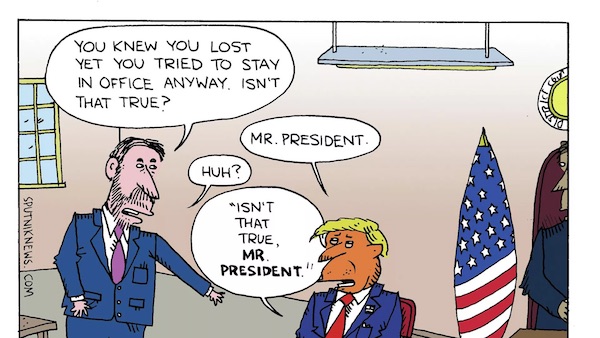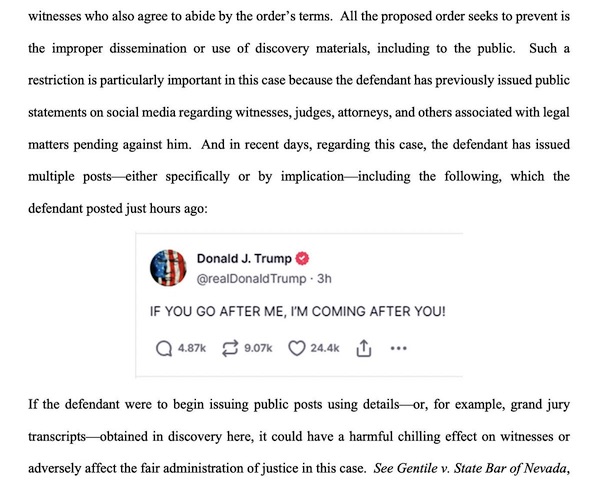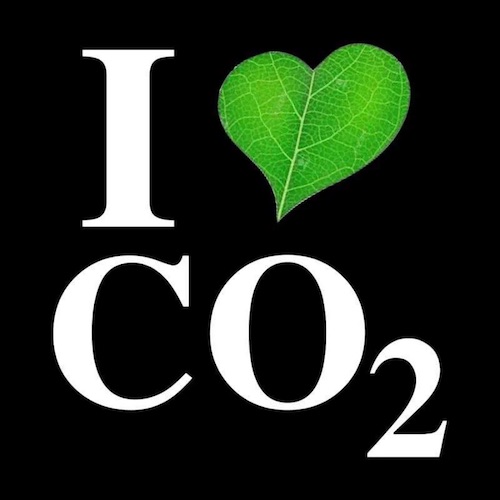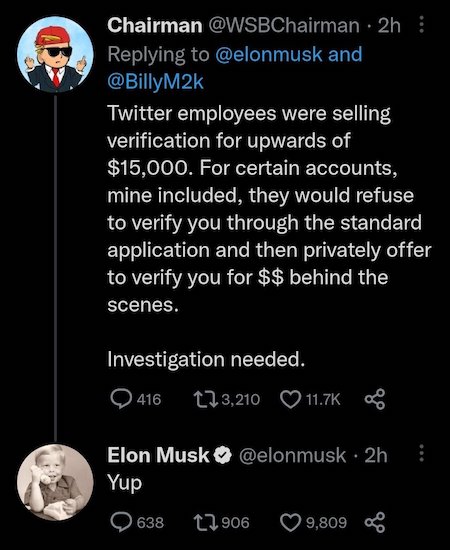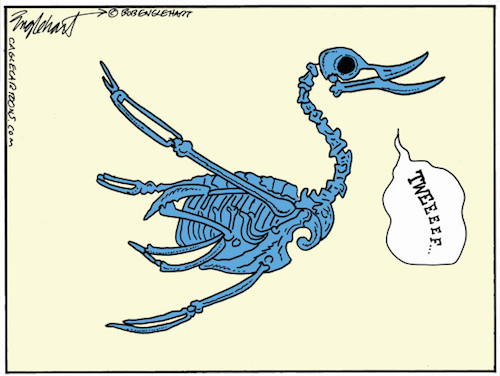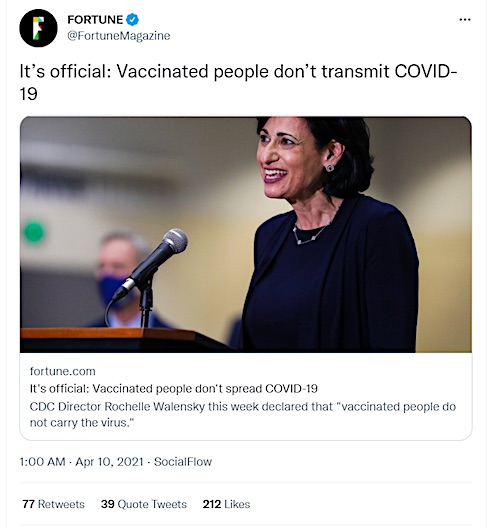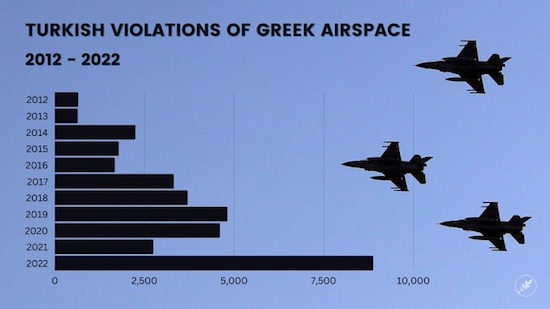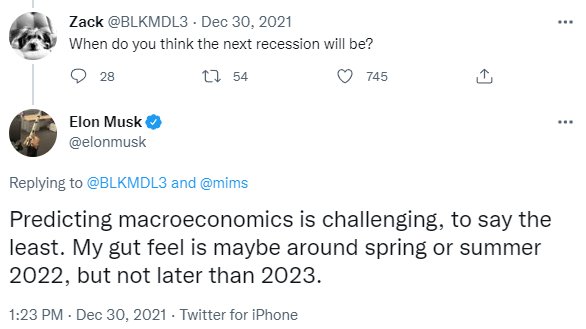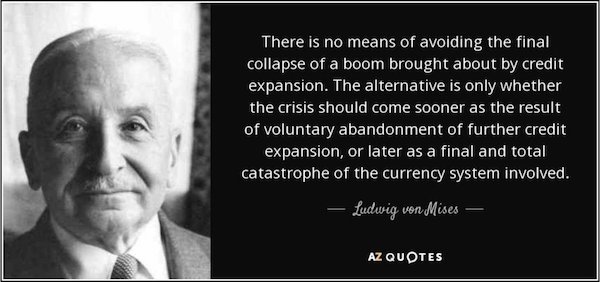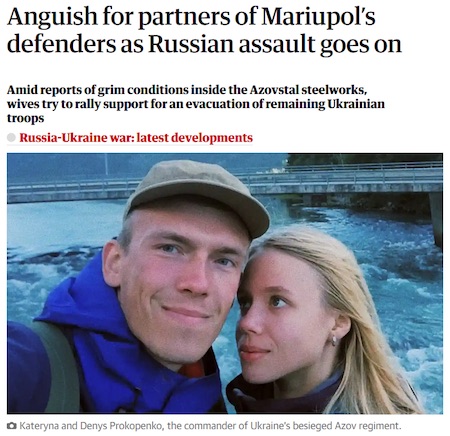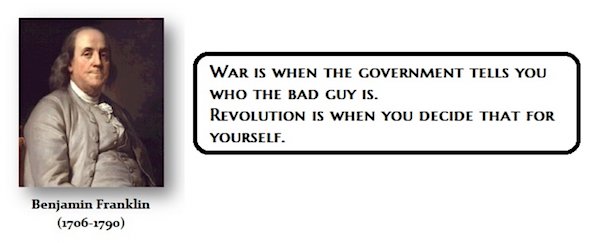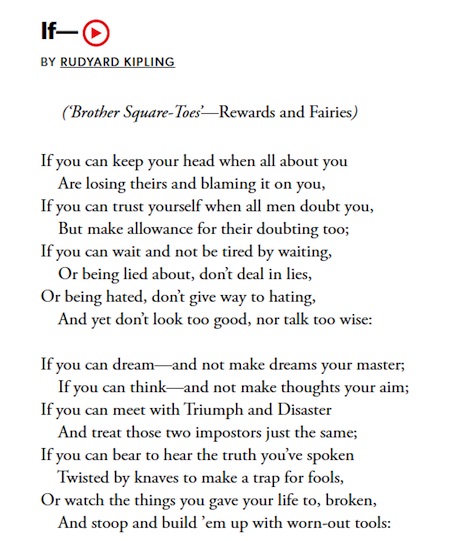
Balthus Therèse dreaming 1938

The alleged rape supposedly took place in 1996. With a script straight out of Law and Order. 16 years later, she’s a big fan of her “rapist”.
Note: the 83 million is not for the “rape”, but for defamation. Which she says cost her her job at ELLE magazine. ELLE has denied this.


Tucker Texas cartels
On Monday, a trucker convoy heads to Texas to try to protect our country from invasion. A conversation with one of the leaders of it, as well as with the attorney general of Texas on where the border standoff goes next. pic.twitter.com/tZ4PIViJua
— Tucker Carlson (@TuckerCarlson) January 26, 2024

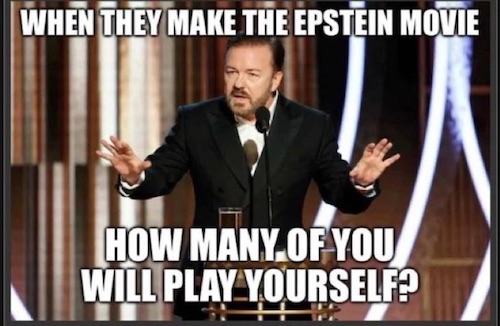


“..Biden’s failure to secure the border leaves states no choice but to take matters into their own hands..”
• RFK Jr. Praises Texas In Battle With Biden Over Border (Hill)
Independent presidential candidate Robert F. Kennedy Jr. on Thursday backed Texas in its ongoing battle with the federal government over border authority, criticizing the Biden administration for its handling of the U.S. southern border. “Texas is right. Biden’s failure to secure the border leaves states no choice but to take matters into their own hands,” Kennedy wrote in a post on X, formerly known as Twitter. “As President, I will end this humanitarian crisis once and for all. I will secure the border and destroy the business model of the drug cartels. A country without borders is not a country at all.” Kennedy joins a growing list of politicians, most of them Republican, who have thrown their support behind Texas Gov. Greg Abbott’s (R) fight against the federal government over the fencing and razor wire installed by Texas at the U.S.-Mexico border. In a major blow to Abbott, the Supreme Court ruled earlier this week that border agents can remove the razor wire erected on the border, siding with the Biden administration.
Abbott has defended the fencing as necessary for his state’s security, claiming he was forced to take matters into his own hands due to what he characterizes as a lack of action on the Biden administration’s part. The federal government, meanwhile, contends the state does not have the power to build the fencing, which it says prevents it from managing the border. Abbott railed against the high court ruling and contended his authority is the “supreme law of the land and supersedes any federal statutes.” Texas appeared to continue installing razor wire after the ruling came down. Kennedy has previously spoken out against what he sees as a “border crisis” that is leading to the smuggling of drugs and humans. He called Biden’s border policies a “disaster” in a Newsweek op-ed last year. Republican presidential candidate Nikki Haley also spoke out in support of Abbott on Thursday and called Biden’s position “absolutely ridiculous.”
RFK border
I made a 20-minute documentary about the border after I visited last June. Please watch it if you dare to believe that compassion and security can coexist. The tragic irony of our current open border policy is that it benefits nobody — not even the migrants themselves. #Kennedy24 pic.twitter.com/LLkBUdqKj2
— Robert F. Kennedy Jr (@RobertKennedyJr) January 28, 2024

“Biden already has authority to shut down illegal immigration. And now he’s telling us he’s willing to do that, but only if we pass a new law — one whose authors refuse to share with the public or even their own colleagues. Something’s not right here.”
Scott Adams: “The plan is to close the barn door after too many horses get out.”
• Biden Vows To Shut Border If Lawmakers Pass Budget Deal (RT)
US President Joe Biden has again urged Republican lawmakers to approve a long-stalled budget deal, vowing to shut down his country’s southern border as soon as he’s given the authority to do so. Republicans have been blocking the White House’s attempts to push through a $106 billion ‘national security package’ for Ukraine and Israel since October. They have demanded tougher security measures on the southern frontier be included in the agreement. ”For too long, we all know the border’s been broken. It’s long past time to fix it,” Biden outlined in a written statement on Friday. He described the border deal, now being negotiated in the Senate, as “the toughest and fairest set of reforms to secure the border we’ve ever had in our country.”
“It would give me, as President, a new emergency authority to shut down the border when it becomes overwhelmed. And if given that authority, I would use it the day I sign the bill into law,” Biden vowed. Under the bipartisan agreement, the administration would, among other things, be required to shut the border down if the number of migrants trying to get into the US illegally on any given day reaches 5,000, the New York Times reported. This threshold had been surpassed “routinely” in recent months, the paper stressed. Finding common ground on the immigration deal would be “a win for America,” the president insisted. “If you’re serious about the border crisis, pass a bipartisan bill, and I will sign it,” Biden said, addressing the Republican lawmakers.
The Washington Post described the comments as “a remarkable shift” in the Democratic president’s rhetoric on the immigration issue. The media outlet underscored “the urgency” of the situation on the border for his re-election bid. Biden’s statement came as Republican House Speaker Mike Johnson said on Friday that if the leaks about the deal’s content were accurate, it would be “dead on arrival” in the lower chamber. The likely Republican presidential nominee, Donald Trump, slammed the border deal earlier this week, warning that it “would be another gift to the radical left Democrats.” The agreement “will be meaningless in terms of border security,” Trump argued, reiterating that the only way to solve the immigration issue would be voting for him in November.
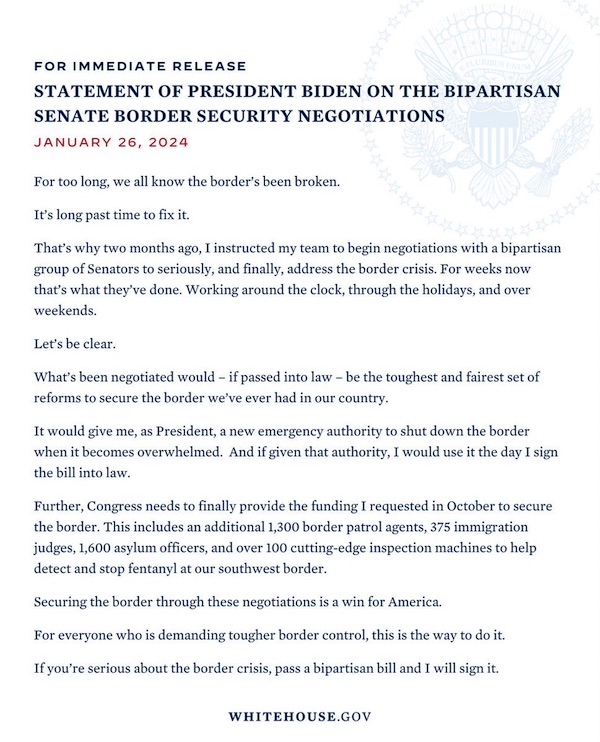

“..the draft bipartisan agreement could allow up to 5,000 migrants to enter the US daily at the border..”
• How Trump and US Conservatives Deal a Blow to Ukraine Aid Package (Sp.)
Former US President Donald Trump and Republican policymakers have subjected a draft bipartisan US border security deal to harsh criticism, casting doubt on the future of military aid packages for Ukraine and Israel. The border security deal is seen by Democratic lawmakers as a necessary evil to ram a new multi-billion Ukraine aid bill through the US Congress. Last December neither chamber managed to reach a compromise on the provision of further funds to Kiev despite pleas and even threats from the White House. Eventually, Republican and Democratic senators come up with a draft border agreement. Even though the formal text of the deal has not been officially released yet, leaks keep coming irritating US conservatives, as per Just the News, an independent US media outlet.
Media reported that the draft bipartisan agreement could allow up to 5,000 migrants to enter the US daily at the border. To that end, the White House is reportedly requesting at least $14 billion to help cities to absorb the flow of migrants released by US border authorities into the country. Former President Donald Trump denounced that as a bad deal in every way: “I do not think we should do a Border Deal, at all, unless we get everything needed to shut down the invasion of millions and millions of people, many from parts unknown, into our once great, but soon to be great again, country!” he wrote on his Truth Social media site on January 25. The US mainstream media warns that the former president’s comment was a “serious blow to the talks”. Trump has emerged as the leading Republican presidential candidate following the party’s first two primaries this month, with the power to influence the outcome of the negotiations.
Punchbowl News reported that Republican Senate leader Mitch McConnell told his colleagues on Wednesday that the situation had “changed,” and that Trump was going to build his re-election campaign around the border crisis. “We don’t want to do anything to undermine him,” McConnell allegedly said. However, on Thursday the GOP leader appeared to backpedal on his remarks, asserting to the press that he still backed the bipartisan migration deal. Deputy White House Press Secretary Olivia Dalton also signaled that the Biden administration as supporting the bipartisan immigration agreement. “The president has been clear, we need action on the border,” Dalton told reporters on Thursday. “We’ve been engaging in good faith, bipartisan negotiations with both Senate Democrats and Senate Republicans to that end. And we believe that there’s no reason that shouldn’t continue.”
Still, some US senators warn that the effort is doomed. US Senator Ted Cruz said on Wednesday that the Ukraine aid-border security supplemental bill is a train wreck and has no chance of passing the US House of Representatives. Senator Rick Scott echoed Cruz, saying that the bill will be dead on arrival in the House. Earlier this week the Quincy Institute for Responsible Statecraft suggested that House Republicans may kill the foreign aid bill even if a bipartisan border security and immigration deal is passed. The lower chamber’s Republican majority has no appetite for throwing good money after bad to Ukraine, according to the institute. The DC-based think-tank also noted House Speaker Mike Johnson’s ardent support for a sweeping migration reform and his record of opposing Ukraine funding packages. Some House Republicans, such as Representative Marjorie Taylor Greene, even threatened to introduce a “motion to vacate” and oust the speaker if Johnson passes funding to Ukraine.

“..a US Senate committee approved the “Rebuilding Economic Prosperity and Opportunity (REPO) for Ukrainians Act..”
• US Promised To Seize Russian Assets – Kiev (RT)
The US assured Kiev that the Russian assets that remain frozen in the West are going to be seized and used to rebuild Ukraine after the conflict, Ukrainian Prime Minister Denis Shmygal has said. The US, EU, and their allies blocked some $300 billion of Russian central bank assets as part of sanctions in response to Moscow’s military operation in Ukraine. Around $200 billion of that money is held in the EU. Politico reported on Thursday that it asked Shmygal if he was concerned that US funding for the Kiev government would come to a complete stop if Donald Trump won the presidential election in November and returned to the White House for his second term. ”We have all the assurances from the US about long-term support for Ukraine – for example, the seizure of Russian assets to fund the Ukrainian recovery,” he claimed.
On Wednesday, a US Senate committee approved the “Rebuilding Economic Prosperity and Opportunity (REPO) for Ukrainians Act,” which should help pave the way for such a move by Washington. If it passes both houses and is signed into law by President Joe Biden, Washington could seize the Russian central bank assets, using such a measure against a country that it’s not directly at war with for the first time in history. Reuters reported this week, citing a senior official in Brussels, that the EU will be unlikely to join the US in confiscating the Russian funds as there’s no agreement on such a step between the bloc’s member-states. Earlier in January, Russian Deputy Foreign Minister Sergey Ryabkov warned that Moscow would respond to a possible seizure of its assets by the West, inducing tit-for-tat measures.
Previously, Kremlin spokesperson Dmitry Peskov said that the confiscation of Russian funds would amount to “outright theft” by the West. He told reporters that it would undermine the trust in the US and EU financial systems around the globe. Shmygal also stated that Kiev is “working hard with the administration of President Biden and with Congress to have support for 2024.” As for the continuation of the aid in 2025, “we’ll see how conditions develop,” he stressed. ”I believe that any president of the US will support our fight for civilized values, our mutual values,” the Ukrainian PM said. The US has provided Ukraine with around $111 billion in economic and military support amid the conflict with Russia. But the flow of funds subsided dramatically in recent months as Republican lawmakers continue to resist attempts by the White House to push through another $60 billion in assistance for Kiev.

“..weaponizing a currency inevitably reduces its attractiveness and encourages the emergence of alternatives..”
• Seizing Russia’s Money Would Endanger Euro – Italian Central Bank (RT)
The EU should not use the euro as a tool in sanctions wars and political disputes, as it would harm the currency’s image and standing, Bank of Italy Governor Fabio Panetta warned on Friday. He as commenting on discussions in Brussels regarding frozen Russian assets. The EU, US, Japan and Canada froze some $300 billion of Russian central bank assets in 2022 as part of Ukraine-related sanctions against Moscow. Some $200 billion of that is held in the EU, largely in the Belgian clearing house Euroclear. Brussels is currently working on plans to apply a windfall tax to the profits Euroclear is making on the frozen funds, while opting not to seize the immobilized money outright.
However, Italy is one of several EU member states, including Germany and France, that have been skeptical of moves involving the assets, arguing that using them could prompt investors from other countries to doubt the safety of their own holdings in the EU and quit the bloc’s market, ultimately weakening the euro. “This power must be used wisely,” Panetta said, referring to euro’s standing as a global reserve currency. “International relations are part of a ‘repeated game’: weaponizing a currency inevitably reduces its attractiveness and encourages the emergence of alternatives,” he warned at an event in Riga, marking the 10th anniversary of Latvia adopting the euro. According to the official, the recent surge in the use of the yuan in trade between China and Russia is “instructive in this respect,” because it was Western sanctions that prompted the trend, as they made it difficult for Russia to use US dollars and euros in cross-border trade.
“The Chinese authorities are explicitly promoting [the yuan’s] role on the global stage and encouraging its use in other countries, including those sanctioned by the international community following the invasion of Ukraine,” Panetta said, adding that the share of Chinese trade financed in the domestic currency has doubled in the past three years, allowing the yuan to overtake the euro as the world’s second most-used trade currency. The official warned if the need to “be alert to the possibility that politics will have a greater impact on international currencies in the coming years.” Western currencies have been largely phased out in Russia-China trade, as nearly 95% of all transactions between the countries are now carried out either in rubles or yuan. Russia is not the only major economy to use the Chinese currency for trade settlements, as more and more nations seek alternatives to the dollar and euro. These include Argentina, Saudi Arabia, Brazil and Iran.

“..this BS is being fed into the echo chamber because a panic is setting in both on a EU level and national one as elections are looming and the smell of defeat is beginning to fill the lungs of the corrupt..”
• EU and NATO Heading for the Abyss Over Foreign Policy Foibles (Jay)
A number of odd statements have been coming from the EU in recent days, coupled with some even odder skulduggery giving rise to thought that the entire project is having its ‘last days of the Roman Empire moment’. Is it possible that the EU that we know is on its last legs and what we are witnessing is the final demise? Ursula von der Leyen, whose grandparents were probably Wafen SS officers has said that if she doesn’t get her way in finding new money for Ukraine she will have to resort to dirty tricks. Well, she didn’t actually say “dirty tricks” but this is what is implied. And what might those underhand moves might be? In fact, there is already a motion in the EU corridors to make Hungary effectively a non-EU member state, a sort of rogue member which is still in the EU but has no voting rights.
Given that the EU is anything but a democracy and that the institutions in Brussels are monolithic and consensus-driven (there is no ‘opposition’ in Brussels like in most democratic countries) it is hardly surprising to see nefarious activities which would make an African dictator proud of his handy work. The EU, or rather the super federalist elite which run it in Brussels like von der Leyen and her mates as Pfizer – yes, multinational corporations really wield the most power in Brussels and more or less own the European Parliament – are getting worried. The project is starting to indulge in in-fighting and creating a lot of mixed message in the media. Gardner-in-chief Josep Borrell wants a new shiny state for the Palestinians but Ursula is perfectly happy with the present genocide program. Perhaps she sees in investment opportunities in offshore gas off the coast of Gaza?
And so with the economy in the doldrums and the EUs most powerful member state Germany looking more and more like the Czech Republic in the late 90s, the uber elites like Ursula and the most vile MEP the European Parliament ever had – Guy Verhofstadt – are worried that the project can be hijacked by far-right MEPs come the next euro election in the summer. Ironically, in such a scenario where the European parliament’s main majority bloc would be a far-right group, the support for Netanyahu would peak and even save him from falling into his own quagmire of corruption charges, as the far-right in Europe support the Zionists, shifting from the once popular idea of wiping them out under Hitler’s ‘final solution’ plan.
But the EU would never be the same again. These MEPs support reversing the centralisation of power back to member states. And so it is hardly any surprise at all that Verhofstadt, a man so bereft of charm that he makes a pile of damp towels look exciting, gives another one of his fiery speeches in the European parliament with always the same theme: all our problems can be resolved if we has more money, more power and an EU army. The fault is with member states, the European parliament’s top wanker-in-chief argues as he throws his head around and animates very much like a power hungry leader in the 1930s who got us in this mess in the first place. Have you noticed lots of media reports pointing to war with Russia? Wonder what this is based on? Of course there is no imminent war with Russia but the pundits can’t help presenting one to us, proclaiming that Putin wants to take the odd European country, like a rich man who collects them like pets.
The reality is that this BS is being fed into the echo chamber because a panic is setting in both on a EU level and national one as elections are looming and the smell of defeat is beginning to fill the lungs of the corrupt who have been feeding from the same trough for too long. Create a panic about a war looming and enough stupid Europeans and Americans will accept spiralling consumer prices, high pump prices, insane utility bills (like in the UK), poor growth and no jobs. Few westerners see through the lies and see the ruse in the making. Even the Germans.

“..this is just a “snapshot” of the current situation and there’s no way of knowing how things would turn out in the future..”
• ‘No Threat’ Of Russia Attacking NATO – Germany (RT)
There’s currently no threat of Russia attacking NATO or any of the partners of the US-led military bloc, German Defense Minister Boris Pistorius has suggested. Moscow’s military is now fully occupied with the Ukraine conflict, Pistorius explained, in an interview with the tabloid Bild on Friday. ”At the moment, I don’t see any danger of a Russian attack on NATO territory or on any NATO partner-country,” he added. However, the minister stressed that this is just a “snapshot” of the current situation and there’s no way of knowing how things would turn out in the future. Pistorius warned against underestimating the alleged risks related to Russia, saying that NATO needs to rely on “the principle of deterrence, as we know it from the times of the Cold War.” During that time, things between the West and Moscow were “much more predictable than the situation we have today,” he argued.
”We are coming out of 30 years of peace… from which we have all benefited. And now the journey is going the other way,” the minister said. NATO and Germany must “really pick up the pace” in order to be able to face the emerging challenges, he stressed. Germany has given to Ukraine “a lot of systems” that Berlin needed for itself since the outbreak in February 2022 of fighting between Moscow and Kiev, but “we will get them again,” Pistorius vowed. Earlier this week, commenting on the possibility of a direct conflict between NATO and Russia, the bloc’s Secretary General Jens Stoltenberg said that “we don’t see any direct or imminent threat against any NATO ally.” He stressed, however, that NATO “closely monitors what Russia does” and has increased its “vigilance and presence in the eastern part of the alliance” in order to be able to counter any moves by Moscow.
Pistorius told ZDF on Monday that Germany should be ready to respond to a possible Russian attack. In order to be able to resist an aggression “that you don’t know if and when it will occur, then that means you have to arm yourself – and that’s what we’re currently doing together with allies in NATO,” he explained. On Tuesday, Kremlin spokesperson Dmitry Peskov dismissed Pistorius’ speculation about a possible conflict between Russia and NATO, saying that, due to internal problems the EU faces, its politicians “now need to somehow pump up public opinion, artificially agitate it, by inventing an external enemy.” Speaking at UN headquarters in New York the following day, Russian Foreign Minister Sergey Lavrov stressed that “no one wants a big war,” especially Moscow. “We have lived through ‘big wars’ many times in our history,” he added. President Vladimir Putin last month rejected as “complete nonsense” claims that Russia could attack NATO. Moscow has “no geopolitical, economic… or military interest” in doing so, he pointed out. Russia is, on the contrary, interested in developing ties with the bloc, he said.

“..American voters see where the threats of authoritarianism truly lie, and it isn’t with Donald Trump…”
• Davos, Dictators, and the Real ‘Threats to Our Democracy’ (Hollis)
The former Soviet Union collapsed politically because its centrally planned economy suffered disaster after disaster. Government takeover of the Venezuelan economy destroyed that once-prosperous country, plunging its residents into abject poverty. When the president of Sri Lanka banned nitrogen-based fertilizer, the country’s agricultural sector collapsed, as did its exports, leaving Sri Lankans without adequate food, fuel, or oil to heat their homes. Here in the United States, we have witnessed the nasty consequences of plenty of government policy failures: the health risks of COVID-19 shots; the spectacular failure of wind power in Texas during the 2021 winter storm; the inability of electric vehicles to start in the bitter temperatures across the northern U.S. two weeks ago; California’s water shortages and the struggling capacity of its electrical grid.
Egotists like WEF founder Klaus Schwab and his God-complex, like-minded cronies across the globe never consider that they could be wrong about anything. But they are always wrong about something. Trump voters do not want a dictator; they do not want an imperial presidency at all. They want a president who understands that free and independent businesses operating in a minimally regulated environment are the lifeblood of American prosperity. They recognize that an executive branch that refuses to enforce federal laws is failing in its primary constitutional obligations to the American public. They understand that a justice system that picks and chooses whom to prosecute based upon their race, ethnicity, or political belief is no justice at all. They are tired of inflation caused by misguided energy, trade, and environmental policies.
They are tired of our veterans suffering and dying with their physical and mental health needs unmet; tired of homeless people living in the streets; tired of open borders, of tens of thousands of Americans dying of fentanyl overdoses, and tired of unpunished crime, all while hundreds of billions of our hard-earned tax dollars get laundered through foreign wars into the pockets of multinational defense contractors, corruptocrat politicians, and warmongering toadies who never saw a foreign conflict they didn’t want to exploit. These Americans reject the globalist overlords pushing their anti-human philosophies down everyone’s throats, and they fear being enslaved by governments infiltrated by mindless drones in thrall to the latest apocalyptic power grab. The press and the Left can hand-wave and hyperventilate all they want about “threats to our democracy.” But American voters see where the threats of authoritarianism truly lie, and it isn’t with Donald Trump.

Just give up.
• WH’s New Strategy on Ukraine ‘Will De-Emphasize’ Retaking ‘Lost Territory’ (Sp.)
The Biden administration’s new strategy will “de-emphasize” Kiev’s recovery of the so-called “lost territories” this year and instead focus on Washington helping the Zelensky regime survive amid Russia’s ongoing special military operation, the Washington Post quoted unnamed sources as saying. The sources were apparently referring to the territories previously reunited with Russia as a result of popular referendums. They claimed that the Biden administration, “still smarting” from Kiev’s bungled counteroffensive in 2023, is “putting together the new strategy,” which includes helping the Zelensky regime strengthen its armed forces and economy in the face of the Ukraine funding impasse in the U.S. Congress.
The strategy’s other purpose is to help Kiev strengthen its fighting force and economy in the face of Ukraine funding-real impasse in the US Congress, according to the sources. “The emerging plan is a sharp change from last year, when the US and allied militaries rushed training and sophisticated equipment to Kiev in hopes that it could quickly push back Russian forces,” insiders pointed out. One source added that “it’s pretty clear” that it will be difficult for the Ukrainian Armed Forces to try to achieve “the same kind of major push on all fronts that they tried to do last year.” The idea is help Ukraine “hold its position on the battlefield for now, […] and “get them on a more sustainable path,” per the source. Russian Defense Minister Sergei Shoigu declared in late December that the Russian armed forces had achieved last year’s main goal by thwarting Ukraine’s summer counteroffensive.
“The main efforts of the past year were focused on achieving the goals of the special military operation. The main one was to stop the counter-offensive of the Ukrainian Armed Forces, which was loudly proclaimed by Ukraine and its NATO allies. This task was successfully accomplished,” Shoigu emphasized at the time. The statement came after Chief of the General Staff of the Russian Armed Forces Valery Gerasimov told reporters that Ukraine had lost some 160,000 troops and over 3,000 armored vehicles, including 766 tanks, as well as 121 aircraft and 23 helicopters in all areas during the six-month counteroffensive.

“..in a number of European countries, Russophobia is being promoted as the state policy.”
• Putin Vows To Eradicate Nazism For Good (RT)
Russian President Vladimir Putin has vowed to crush modern-day forces that promote Nazism, singling out Ukraine and the Baltic states as countries where the authorities have embraced such ideologies. Speaking on Saturday at the opening of a memorial to Soviet civilians killed by Nazi German forces in Leningrad Region, the Russian head of state said: “these days the outcomes of the Nuremberg trials are effectively being revised.” He claimed that some countries have gone from rewriting history and whitewashing the Nazis to “arming themselves with Hitlerites’ ideology and methods.”
President Putin cited the Baltic states, in an apparent reference to their treatment of Russian-speaking minorities, which Moscow deems discriminatory. “The regime in Kiev lionizes Hitlers’ accomplices, SS members, and uses terror against” those who resist it, the Russian leader alleged, accusing the Ukrainian authorities of subjecting the elderly, women and children to “barbaric shelling.” According to President Putin, “in a number of European countries, Russophobia is being promoted as the state policy.” “We will do everything – everything to undercut and eradicate Nazism for good,” the Russian head of state pledged.

“..South Africa was after the provisional ruling to force Israel to agree to a ceasefire in Gaza.”
• ICJ Ruling May Entail Dire Consequences for Israel (Sp.)
“Provisional measures is what South Africa wanted,” noted Carrillo, “that there is enough evidence to show that Israel has violated the 1948 Genocide Convention. “This is what South Africa wanted when they filed this suit because a final ruling by the courts can take months, it can take years. South Africa was after the provisional ruling to force Israel to agree to a ceasefire in Gaza.” Still, Carrillo noted that Israel often ignores world opinion and discounts measures taken against it in the international arena, such as when the Soviet Union led a 1975 effort in the United Nations to declare that Zionism is a form of racism and racial discrimination. “Israel has a long history of disregarding the rulings or the opinions of international organizations,” said Carillo. “They do as they will, and they have the complete protection of the United States who at best is going to issue a lukewarm statement about protecting civilians. That’s what I think we should expect.”
However, host Jamarl Thomas noted the significant “moral weight” the decision carries as Carillo insisted Israel “did not refute any of the evidence, they did not disprove any of the South African evidence.” Amidst a rapidly emerging multipolar world order, Carillo suggested Global South countries and their allies may enforce material consequences against Israel for their actions in Gaza, where 70% of the more than 26,000 deaths are said to be of women and children. “We will have to see, because we are seeing a polar shift in the geopolitical sphere,” said the analyst. “Maybe we will see countries like Russia, maybe like China, or maybe like South Africa or other BRICS members, find a way to stop or to punish Israel in a way.”“Economically, Israel is already facing dire consequences,” Carillo claimed. “Its ports are empty, its workforce is completely depleted, and, among other things, their currency is on the downward trend.
So if you add on top of these, as you said, the moral weight of committing genocide and then more than likely not stopping, how are nations not aligned with the US, why would they continue dealing with Israel? Where is the benefit?”Israel also continues to face economic repercussions as a result of the effective blockade in the Red Sea enforced by the Houthi movement in Yemen. Despite Yemen’s status as one of the poorest countries in the Middle East, Yeminis have demonstrated strong support for the Palestinian cause, with hundreds of thousands taking to the streets to protest US and UK-led retaliatory strikes in the country. “There will always be resistance to oppression,” Carillo insisted. “Always. We know this through human history.”

“The problem is that when you are “everything” to a client, you may end up with nothing when it comes to confidentiality.”
• Who is Kevin Morris? Even Hunter’s Lawyer Seems Unsure (Turley)
Kevin Morris testified last week in the House. The question that lingered then, and now, is who is Kevin Morris. The Hollywood lawyer, producer and Democratic donor has emerged as a major figure in the corruption scandal surrounding Hunter Biden.For years, some of us have complained that we are not sure what Morris was at any given moment.What became clear in the deposition is that Morris does not appear certain himself. He’s Hunter’s confidant, art patron, business partner, and his lawyer. That could prove his undoing … both for himself and his client. Morris seems to move effortlessly between roles in his relationship with Hunter Biden.Hunter met Morris when he attended a political fundraiser as a major donor. Soon thereafter, he warned Biden associates that Hunter’s unpaid taxes raised political problems during Joe Biden’s 2020 presidential run.
He later proceeded to pay off Hunter’s taxes and to subsidize his lavish lifestyle. He also took an apparent lead in planning public campaigns against the critics of the Bidens, reportedly pushing a scorched-earth approach to attack potential witnesses and accusers. Then Morris seemed to take on the role of Hunter’s bank and art patron. He reportedly gave millions to Hunter while insisting that they are loans, not gifts. Most recently, it was revealed that, despite accounts of buyers flocking to buy Hunter’s overpriced art, it was Morris all along who bought most of the pieces. The overpriced art could be used to excuse some of these “debts” — a type of special crafts project for the president’s son to write off millions. The most striking thing about the deposition from his House interview was the speed at which Morris seemed to put on and remove his various hats.
He invoked attorney-client privilege at least 17 times over questions related to his payments and work for Hunter Biden. Yet, while refusing to answer those questions, he admitted to an array of other financial ties and transactions with his “client.” To the extent that Morris was not acting as a lawyer but as a businessman or a friend, these conversations (and related records) may not be protected. In his deposition, Morris also discusses his ownership of 10% of Bohai Harvest RST LLC (BHR), through his acquisition of interest in Skaneateles LLC. Those are business interests associated with Hunter Biden Morris seemed to be working through his own identity crisis with the help of House investigators. While insisting that his legal representation of Hunter Biden was “global and complete,” Morris detailed how his relationship floated from loan giver to friend to patron to film producer.
His counsel insists that all loans and roles were clearly laid out for Hunter in writing and reviewed by outside counsel. House investigator: “How did it come up that you were going to purchase Skaneateles? Or why did you buy Skaneateles of all the companies that Hunter Biden was involved with? Why that one?” Morris: “That’s privileged. I am not going to answer that because of attorney-client privilege.” That prompted a quick intervention by his lawyer. Morris reversed and agreed it was not protected and said that he “evaluated it as a businessman, and I thought it was something that could be a very successful investment.” Morris’ confusion often left his answers in an unintelligible morass. When asked about his decision to do a movie on his client, Morris again seemed to merge his roles, saying these are “just materials being collected for representation that may be used in the future after the representation.”
Later, Morris seemed to invoke an open-ended, running privilege. At one point, Morris claimed he was “like a general counsel” in Hunter Biden’s “virtual corporation.” He explained, “Counsel, in my job, I represent high-profile individuals. … [H]igh-profile individuals have basically virtual corporations. And in those virtual corporations, they have all kinds of staff and assistants. You know, agents and managers … publicists. You know, whatever. And what I do is I oversee … sort of the squad. Sort of like a general counsel.” With that, Morris was viewed as asserting a type of floating privilege because “I am involved in everything. And the same is with Hunter. If you check my retainer agreements, you’ll see that it’s not — it says all matters.” The statement is both factually accurate and ethically dubious. It seeks sweeping privilege claims despite the layers of different relationships, from loaner to donor to lawyer to producer. If Morris is called to testify in court, this may not fly. The problem is that when you are “everything” to a client, you may end up with nothing when it comes to confidentiality.

“..The relationship between James Biden, Hunter Biden, Ye, and other partners resulted in at least $9 million in payments to Biden-connected companies in 2017 alone after Joe Biden returned to private life..”
• Hunter Biden Partner Rob Walker Confirms Payments To Biden Family (JTN)
Hunter Biden associate Rob Walker appeared for a transcribed interview with the House Oversight Committee Friday as the latest witness in the impeachment inquiry and weeks before Hunter Biden is set to testify. According to a source familiar with Walker’s testimony, he confirmed reports that Hunter Biden’s work for the Chinese energy company CEFC began while Joe Biden was still Vice President, in 2015. In December, Just the News reported that the impeachment inquiry had assembled a growing body of evidence that Hunter’s work with the Chinese energy company started years before its million dollar payments began to flow into the Biden family coffers in 2017, following Joe Biden’s departure from office. “Today we learned that Joe Biden met with the now-missing Chairman of CEFC, Ye Jianming, as Hunter Biden and his associates received $3 million from a Chinese entity CEFC controlled. Evidence continues to reveal the Bidens sold the ‘Biden Brand’ to enrich the Biden family,” Oversight Chairman James Comer said in a statement released by the Oversight Committee.
“Today’s interview confirmed Hunter Biden and his associates’ work with the Chinese government-linked energy company began over a year before Joe Biden left the vice presidency, but the Bidens and their associates held off being paid by the Chinese while Joe Biden was in office,” he continued. “The Chinese company paid Hunter Biden and his associates $3 million shortly after Joe Biden left office as a ‘thank you’ for the work they did while Joe Biden was in office. Members of the Biden family received payments from the Chinese deal even though they did not work on it. This is the type of swampy influence peddling the American people want us to end,” Comer said. The relationship between James Biden, Hunter Biden, Ye, and other partners resulted in at least $9 million in payments to Biden-connected companies in 2017 alone after Joe Biden returned to private life.
The payments included a $3 million “thank you” in March 2017, a $5 million loan in August 2017, and a $1 million legal retainer fee to Hunter Biden from CEFC official Patrick Ho after he was indicted on bribery charges, according to documents gathered by Congress and federal prosecutors. Yet, evidence from Hunter Biden’s abandoned laptop and FBI interviews with Biden business partners provided to Congress show that the relationship dates back to at least 2015 and 2016. One email from Rob Walker to another of Hunter Biden’s business partners referenced an apparent letter from Hunter to Zang Jianjun, the executive director of CEFC China Energy, who worked directly for its founder and Chairman Ye Jianming.
In an interview with the FBI, Walker told investigators that he recalls two meetings that Vice President Biden had with CEFC officials, one after leaving office in 2017 and another while he was still in office. The interview was provided by IRS Whistleblowers Gary Shapley and Joe Ziegler to the House Ways and Means Committee in their probe of the IRS and DOJ investigation into Hunter Biden. “Any times when he was in office or did you hear Hunter say that he was setting up a meeting with his dad with them (CEFC) while dad was still in office?” an FBI agent asked Walker. “Yeah,” Walker responded. After this admission, the investigators inexplicably changed course and did not follow up on what Walker had just told them.

“..hunter killer assassins meeting boy scouts.”
• Boeing’s Nosedive: How Greed Ruined A Great American Company (Johnston)
The singular event cited as marking the beginning of Boeing’s downfall was its 1997 merger with McDonnell Douglas, which put it on a collision course with a culture steeped in cost-cutting and financial performance. Somewhat perversely, although Boeing had acquired McDonnell, it was the latter that took over. McDonnell’s executives ended up running the company and its culture became ascendant. Scores of cut-throat managers battle-hardened in the company’s perform-or-die culture were brought in. A federal mediator once likened the partnership to “hunter killer assassins meeting boy scouts.” The self-effacing and introspective Bill Allen, Boeing’s genteel CEO through the post-war era and the man behind the 707 gamble, described his company’s ethos as “to eat, breathe, and sleep the world of aeronautics.”
But a new generation of leaders was emerging who brought new priorities and a new vocabulary. It was no longer about making great airplanes; it was about “moving up the value chain.” What it was really about was maximizing shareholder value. Now looming like a colossus over Boeing was the figure of Harry Stonecipher, McDonnell’s CEO. The blunt, hard-nosed son of a coal miner, Stonecipher was known for vicious cost-cutting, emails written in all caps – and for jettisoning executives who didn’t hit financial targets. But Stonecipher was a ‘winner’: McDonnell’s stock price had risen fourfold under his tenure. What predictably ensued was nothing short of a complete transformation of Boeing from being a company run by engineers to one that prized financial profit over all, and was willing to cut all manner of corners to reduce costs and boost returns.
The quality of the product was, to put it mildly, severely compromised. Downstream from these changes are the spectacular failures we all know about: the outrageous cost overruns, delays and production issues in making the Boeing 787, which ended up being temporarily grounded for battery fires that regulators attributed to flaws in manufacturing, insufficient testing and a poor understanding of an innovative battery; the abject failure of the jimmy-rigged 737 MAX, which saw two deadly crashes and, most recently, a harrowing incident in which a sealed-off emergency exit blew out mid-air in an Alaska Airlines flight, leaving a gaping hole in the fuselage. m It is possible to see Boeing’s merger with McDonnell as simply an unfortunate mistake, and the rise of the likes of Harry Stonecipher as simply an instance in which the wrong person found his way to the top; and the outsourcing and cost-cutting as simply a misbegotten strategy.
But this would miss the wider trends at work in the American corporate landscape at the time. Boeing was hardly alone on this path. The writer David Foster Wallace once wrote that “America… is a country of many contradictions, and a big contradiction for a long time has been between a very aggressive form of capitalism and consumerism against what might be called a kind of moral or civic impulse.” What is evident is that starting roughly in the 1970s, this “aggressive form of capitalism” became ascendant in the US and for a long time overwhelmed – and is arguably still overwhelming – the “moral and civic impulse.” However, to view this as simply a moral failing is to miss the greater economic pressures at work.
The ‘70s were, in the words of historian Judith Stein, the “pivotal decade” that “sealed a society-wide transition from industry to finance, factory floor to trading floor, [and] production to consumption.” America had emerged from World War II with unquestioned manufacturing supremacy, but within a few short decades, US companies had begun falling behind. Whereas Japan, Germany, and, later on, China invested heavily in their industrial bases in the post-war period, the US came to emphasize innovation at the expense of capital investment. The 1970s were when nascent industrial powerhouse Japan pulled off its so-called ‘revolution of quality,’ which went a long way toward putting American manufacturers on the back foot.

“..Trump will have to soldier on. He must stay controlled amid the tsunamis, not play into the hands of his accusers, and remember that he may soon be the only eleventh-hour hope to stop this mockery of American law, customs and traditions.”
• 83 million? (Victor Davis Hanson)
Donald Trump in furor stormed out of a New York courtroom for a while, in the defamation suit brought by author and dating/boyfriend/sex-advice columnist E. Jean Carroll. It was just settled against Trump for $83.3 million! The Carroll suit was largely subsidized by Reid Hoffman the billionaire capitalist, and mega-donor to the Democratic Party and leftwing causes. The subtext of Trump’s rage, aside from the outrageous monetary size of the defamation ruling, is that he was facing—and angered—a leftwing claimant, a quite hostile leftwing judge, and a leftwing New York jury. The civil suit serves as a mere preview of four additional leftwing criminal prosecutions, leftwing judges, and leftwing juries to come—all on charges that would never had been filed if Trump either had not run for president or been a liberal progressive. Yet here we are.
The E. Jean Carroll case is the most baffling of all five. She, the alleged victim, did not remember even the year in which the purported sexual assault took place, nearly three decades ago. Observers have pointed out dozens of inconsistencies in her story. It was never clear what were the preliminaries that supposedly (Trump denies meeting her) led both, allegedly, willingly to retreat together to a department store dressing room, where during normal business hours the alleged violence took place. Moreover, the sexual assault complaint came forward decades post facto—and only after Trump was running for and then president. Carroll eventually sued him for battery, but well after the statute of limitations had expired and thus the case seemed defunct.
Her claims of defamation injuries arise from being fired from her advice column job at ELLE magazine. She claimed that Trump’s sharp denials and ad hominem retorts led to her career ruin. But the loss for anyone of a column at 76 does not seem such a rare occurrence, and the absence of a salaried job in one’s late seventies for four years does not seem to equate to a $83 million hit. And note the allegation that her dispute with Trump led to her firing was strongly denied by the very magazine that cut her loose. But then another strange thing happened. In 2022, a new law (“The Adult Survivors Act”) was passed in the New York legislature. It also post facto established a twelve-month window (beginning six months from the signing of bill) that permitted survivors of long ago alleged sexual assaults suddenly to sue the accused long-ago perpetrator—regardless of the previous statute of limitations.
That unexpected opening suddenly gave Carroll’s prior unsuccessful efforts a rebirth. And she quickly refiled with the help of arch-Trump hating billionaire Hoffman. Yet the bill may have been introduced with Trump particularly in mind—given the legislator who introduced it, Brad Hoylman-Siga, was known as another Trump antagonist. More interestingly, he had earlier introduced and had passed another Trump-targeted bill. That “TRUST” act had empowered particular federal Congressional committees to have access to the New York State once sealed tax returns of high-ranking government officials—such as Trump. That bill’s generally agreed subtext was a green light for anti-Trump members of Congress to obtain legal access to Donald J. Trump’s tax returns.
So there is an eerie feeling that the New York legislature may have abruptly passed legislation that was aimed at the past conduct of Donald Trump but only after he entered the political arena. While these are not quite bills of attainder, there is something unsettling if they are post facto laws aimed at targeting the most famous and controversial man in America and the leading candidate for the presidency. In essence they were targeted statutes designed to make Trump’s prior legally unactionable behavior suddenly quite legally actionable. Trump will be subject to such special treatment all summer and fall. Prosecutors Bragg, James, Smith, and Willis will synchronize their court business for maximum effect.
Trump again will face leftwing prosecutors, judges, and juries on charges that are politically driven, involving alleged behavior that is either usually not criminalized or not to the same degree as Trump’s case. (Do we remember the nearly $375,000 federal fine belatedly leveled at an exempt Obama but only five years after his 2008 illegal garnering of, and not reporting, foreign campaign contributions?) The stakes are higher each day as Trump closes in on the nomination and thus becomes the hope of half the country to end the Biden madness. Somehow Trump will have to stay calm, give no opening to his legion of hostile prosecutors, while conducting a nonstop campaign against Biden (and for a while Hayley), and while fighting to keep his name on various state ballots.
So what we are witnessing is not even the extralegal efforts of Steele/Fusion GPS, Perkins Coie/DNC/Hillary Clinton in 2016, or the 2020 “Russian disinformation” ruse/change the voting laws/infuse half a billion dollars to absorb the work of the registrar machinations against Trump. We are way beyond all that. The legal system itself, hand-in-glove with leftwing politicos (compare campaign boasts of James and Willis, or prosecutorial visits to the January 6 committee and the White House) is turning the process of balloting and elections into an embarrassing farce. Still, Trump will have to soldier on. He must stay controlled amid the tsunamis, not play into the hands of his accusers, and remember that he may soon be the only eleventh-hour hope to stop this mockery of American law, customs and traditions.




Wild dogs
https://twitter.com/i/status/1751228420925562943

Baby goat
https://twitter.com/i/status/1751252951375712290


The bearded vulture is the only known animal whose diet is almost exclusively bone

Fata morgana
This phenomenon is known as Fata Morgana that takes place when the color of the sea is a perfect match for the sky above it. pic.twitter.com/50Qp01BL63
— Historic Vids (@historyinmemes) January 28, 2024

Monarch
https://twitter.com/i/status/1751398451152044152

Clay
https://twitter.com/i/status/1751471302169227699


Support the Automatic Earth in wartime with Paypal, Bitcoin and Patreon.





